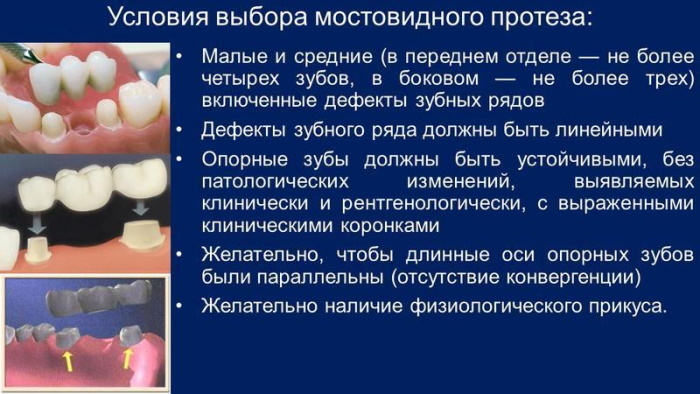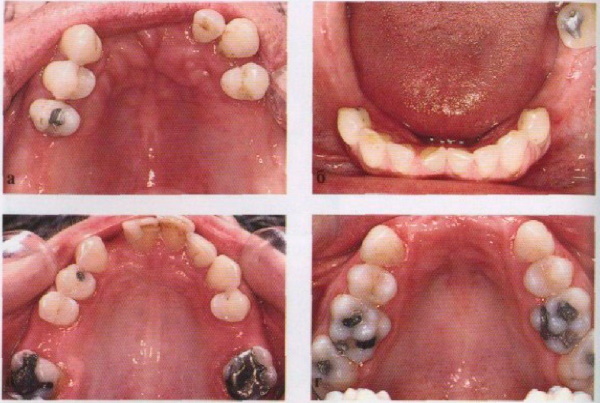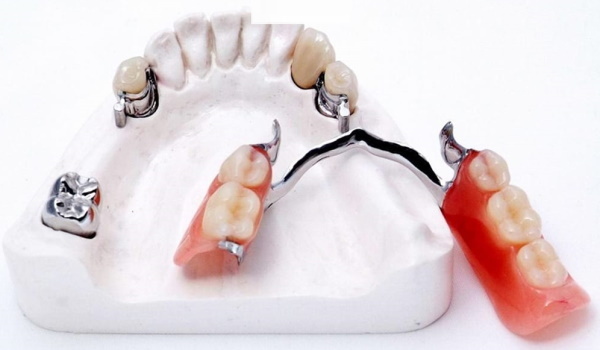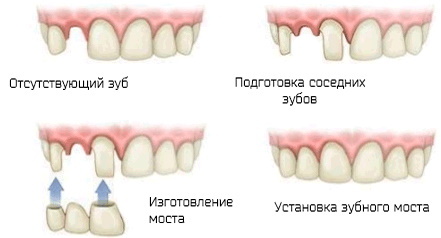Content
- End defects of the dentition on both sides
- 1 subclass
- 2 subclass
- 3 subclass
- Ways to eliminate the end adentia of the dentition on both sides
- Prosthetics with a cantilever bridge
- Removable prosthetics
- The use of implants
- End defect on one side
- 1 subclass
- 2 subclass
- 3 subclass
- Ways to eliminate end defects on one side
- Included defect of the dentition in the lateral region
- 1 subclass
- 2 subclass
- 3 subclass
- Ways to eliminate the included defect of the jaw apparatus in the lateral section
- Installation of a one-sided prosthesis with complex milling and attachment
- Implantation
- Included defect in the anterior region
- Ways to eliminate the included defect in the anterior section
- How to classify if multiple defects at the same time
- Video about Kennedy teeth defects
The classification of dentition defects according to Dr. Kennedy was developed in 1923 by the American orthopedist and dental surgeon by the name of Edward Kennedy, who identified 4 main classes of adentia. This method for determining the defects of the dental arch is considered one of the most informative, understandable and easy to use by practicing orthopedic doctors.
End defects of the dentition on both sides
Bilateral terminal defects of the jaw apparatus are a pathological condition of the upper or lower dental arch, in which the molars of the chewing group are completely or partially absent. The complexity of this type of adentia is that in most cases the doctor cannot use traditional orthopedic prostheses due to the insufficient number of teeth that are used as support for bridges.
The solution to this problem is the installation of removable dentures of various types and modifications. Orthopedic treatment of patients with bilateral terminal dentition defects largely depends on the complexity of the clinical case, the general condition of the patient's oral cavity and jaw apparatus.
1 subclass
The Kennedy classification of dentition defects with bilateral end adentia includes the presence of 1 subclass. In this case, a patient with a similar diagnosis lacks not only the 6, 7, 8 chewing molars of the upper or lower jaw, but also adentia of 1 and 2 teeth.
In this case, a patient with a similar diagnosis lacks not only the 6, 7, 8 chewing molars of the upper or lower jaw, but also adentia of 1 and 2 teeth.
2 subclass
Terminal defects of the jaw apparatus on both sides of subclass 2 are characterized by the absence of chewing molars, as well as the loss of 1, 2 teeth on the right and one 4 teeth on the left side.
3 subclass
The third subclass of bilateral end adentia is expressed by the absence of 1, 2, 4 teeth on the right and 4 molars on the left side. At the same time, 6, 7, 8 teeth were also completely removed from the patient.
Ways to eliminate the end adentia of the dentition on both sides
Various types of prosthetics are used for orthopedic treatment of a defect in the teeth of the chewing group, which are missing immediately on the right and left sides. The selection of a specific therapeutic technique is carried out using a classifier developed by Dr. Kennedy.
Prosthetics with a cantilever bridge
The classification of dentition defects according to Dr. Kennedy is a visual aid for practicing orthopedic doctors, who get the opportunity to conduct a quick visual diagnosis of patients with signs of edentulousness of various difficulties.
In the presence of a bilateral terminal defect of the jaw apparatus, the use of a cantilever bridge is justified as the main method of prosthetics of the chewing group of the teeth of the upper and lower jaw. The use of this method of edentulous elimination is advisable if 2-3 molars located next to the end defect need to be corrected with the use of crowns.
The disadvantage of eliminating bilateral end adentia using a cantilever bridge is that for its installation it is necessary to turn the adjacent teeth. These molars act as a support for anchoring the prosthetic structure. Dentists evaluating this dentition defect using the Kennedy classifier use the cantilever bridge prosthetics method only in extreme cases.
This is associated with a high risk of developing concomitant complications that appear during the first 10 years, namely:
- painful sensations under the crowns of grinded teeth;
- destruction of healthy molars under the bridge;
- curvature of the teeth, which serve as support for holding the cantilever bridge.
The effectiveness of prosthetics of a bilateral terminal dentition defect using a cantilever bridge depends on the qualifications of the dentist, as well as the quality of the work performed. The advantage of this orthopedic technique is the rapid manufacture of prostheses, ease of installation and affordable cost.
Removable prosthetics
Elimination of the end defect in the dentition of the upper or lower jaw, which affected both sides at once, is also performed using a standard removable bridge. This prosthesis is an imitation of the teeth of the chewing group. A removable bridge from the 5th, 6th, 7th of the right and left sides of the upper or lower jaw is connected by a single metal frame, which is fixed around the surface of healthy teeth with the help of special fasteners.
The connecting elements of the prosthesis are attached to the root part of the molar, which completely eliminates the presence of an aesthetic defect. If necessary, a person can independently remove the installed prosthesis, carry out all hygiene procedures, and then fix it again on the surface of the jaw apparatus.
The use of implants
With the help of the implantation method, it is possible to eliminate the bilateral terminal pathology of the dental arch even in the complete absence of the molars of the chewing group. To do this, an implant is installed in the jaw bone tissue with signs of adentia, which will serve as a supporting tooth.
After the completion of all surgical procedures, the patient's recovery after implantation of a metal structure, a fixed prosthesis is installed. In this case, the implant is an integral part of the cantilever bridge, the second edge of which is attached to healthy, ground teeth with a fitted crown.
End defect on one side
Kennedy's classification of dentition defects includes unilateral end adentia of the jaw apparatus. In a similar clinical case, a patient requiring dental care lacks the 7th and 6th teeth on the right side of the upper or lower jaw. This is a classic version of this pathology, which is also further classified into subclasses. The latter variant of dental defects is complicated by the edentulousness of other parts of the masticatory apparatus.
1 subclass
The first subclass of unilateral end defect is characterized by the standard absence of 7 and 6 teeth on the right side of the upper or lower jaw, as well as the loss of 5 and 6 molars on the left side. In this case, there is a complete and partial adentia of the dentition. In conditions of maintaining the integrity of the crown of the 7th tooth on the left, the task of prosthetics of the left-sided defect of the dental arch is significantly simplified.
2 subclass
Unilateral end defect of the 2nd subclass is expressed by the complete absence of 7 and 6 teeth on the right side of the upper or lower jaw, as well as edentulousness of 6, 5, 2 and 1 molars on the left side.

The complexity of this dental defect is that it may require installation of 2 prostheses at once on the left side of the upper or lower jaw, as well as fixation of 1 right-sided bridge.
3 subclass
The third subclass of unilateral end pathology of the dental arch is characterized by the loss of 7, 6 and 4 teeth on the right side of the upper or lower jaw, as well as destruction of 1, 2, 5 and 6 molars on the left side. The complexity of this dental edentulousness lies in the need to fix orthopedic dentures by turning the crowns of healthy teeth with their further use as a support for the established bridges.
Ways to eliminate end defects on one side
The table below shows the main methods for eliminating one-sided end defects using orthopedic techniques.
| Ways to eliminate one-sided end defects | Description of the orthopedic method |
| Partially removable denture | This method of eliminating a one-sided end defect involves the installation of a partially removable prosthesis made of acetal-like plastic. The bridge is fixed with plastic clasps. The advantage of using this prosthesis is that there are no metal elements inside the human oral cavity that can cause a feeling of discomfort. |
| Removable metal denture | This method of getting rid of unilateral edentulous dental arch is a classic variant of posterior teeth prosthetics. The orthopedic structure is made of refractory titanium and is secured with cast clasps. The finished prosthesis is distinguished by its rigid structure and durability. |
Elimination of a one-sided end defect of the dental arch requires a high level of qualifications, excellent knowledge in the field of parallelometry, accuracy, as well as attentiveness during the dental work.
Included defect of the dentition in the lateral region
The Kennedy classification of dentition defects contains a 3 class, which is called the included edentulous molars in the lateral region. According to its characteristics, this type of pathology resembles a one-sided terminal defect, but differs in the presence more complications with the simultaneous loss of several incisors in different areas of the upper or lower jaw. In this case, a mandatory qualification criterion is that a person is missing 5 and 6 teeth on the right.
1 subclass
The included defect of the dental arch in the lateral part of the 1st subclass is characterized by adentia of the 5th and 6th teeth on the right and 6 molars on the left side.  This type of dental pathology is considered to be simpler in terms of the selection of orthopedic techniques for the prosthetics of the upper and lower jaw.
This type of dental pathology is considered to be simpler in terms of the selection of orthopedic techniques for the prosthetics of the upper and lower jaw.
2 subclass
The second subclass of the included defect of the dentition in the lateral region is characterized by complete destruction of 6, 5, 1 and 2 teeth on the right, as well as the loss of 6 molars on the left side. This type of dental pathology leads not only to dysfunction of the chewing teeth, but also deprives a person of the opportunity to bite off rough food.
3 subclass
An included defect in the dentition in the lateral section of subclass 3 is the simultaneous loss of several teeth from the chewing group at once, as well as molars located in the smile zone. In the presence of such a clinical case, the patient immediately lacks 1, 2, 5 and 6 teeth on the right, as well as 1, 4 and 6 molars on the left side. This defect can be found on the lower or upper jaw.
Ways to eliminate the included defect of the jaw apparatus in the lateral section
Orthopedic treatment of an included dental arch defect in the lateral region is aimed at restoration chewing function of the right or left jaw, depending on which side is localized adentia.
Installation of a one-sided prosthesis with complex milling and attachment
This method of prosthetics provides for the replacement of areas of the jaw apparatus, which lacks the dentition, with a metal-ceramic bridge that imitates the natural color of molars. The edges of the prosthesis are fixed in the area of the root part of healthy teeth, which are located along the edges of the dental defect.
Depending on the general condition of the supporting molars, they can be additionally strengthened with inlays that prevent deformation and destruction of the posterior teeth. This prosthesis must be removed once a day for hygiene procedures. For example, during the evening brushing your teeth. After that, the one-sided prosthesis is reinserted into the oral cavity.
Implantation
The implantation procedure is used if the patient has several subclass lateral defects of the dentition, when it is not possible to carry out prosthetics of the jaw apparatus using bridge. In such a situation, it may be necessary to implant one or several implants at once, which in the future will serve as a lateral support for installing a monolithic prosthesis.
The implantation procedure provides for a full-fledged surgical operation to implant a metal structure into the bone tissue of the patient's upper or lower jaw. After the engraftment of the titanium rod, the implant crown is fixed on its upper edge, which completely imitates a natural human tooth.
The main disadvantage of this procedure is that there is always a risk of developing an acute immune reaction of the body with the rejection of a foreign object in the form of a metal structure. The average cost of installing 1 implant is around $ 700. The implantation procedure itself is stretched for a long period of time, taking from 3 to 6 months. depending on the complexity of the lateral dentition defect.
Patients who have undergone prosthetics with the help of implantation should ensure that there is no hypothermia of the jaw bones, do not allow the formation of plaque on the surface of the implant crowns. It is strictly forbidden to participate in fights and engage in contact types of martial arts.
Included defect in the anterior region
An included defect in the anterior part of the dentition of the upper or lower jaw is a type of adentia that is classified according to the method of orthopedist E. Kennedy as follows:
- the integrity of only 3, 4, 5, 6, 7 teeth of the chewing group on the right side is preserved;
- only molars 3, 4, 5, 6, 7 are present on the left side;
- 1, 2 teeth on the right and left sides are completely absent.
A distinctive feature of the included adentia in the anterior part of the dental arch is that areas of the jaw apparatus with signs of the absence of molars are located in the smile zone. A person with a similar dental pathology is deprived of the opportunity to fully bite off coarse food, over time there is a violation of the bite, the reproduction of vowels and consonants.
Ways to eliminate the included defect in the anterior section
The choice of a method for eliminating the included adentia in the anterior part of the dental arch of the upper and lower jaw depends on the total number of missing incisors. In such a situation, a bridge is made, the edges of which are put on top of the lateral molars. In this case, the abutment teeth are ground by the dentist and contribute to the reliable fixation of the prosthesis that mimics the anterior incisors.
Patients with complicated mixed defects require a volumetric bridge, the design which is attached to the posterior lateral teeth, and on its metal base are the missing incisors. Additional attachments are created on other molars of the oral cavity, the structure of which is not disturbed by dental diseases. Depending on the complexity of the metal structure, its main part may come into contact with the surface of the mucous membrane of the hard palate.
How to classify if multiple defects at the same time
Kennedy's classification of dentition defects can cause certain difficulties if, after visual examination of the patient's oral cavity, several varieties were found on one jaw at once adentia.
In a similar situation, E. Kennedy focuses on the fact that in the presence of 2-3 defects that belong to different classes, dental pathology of the dental arch must be determined to the lowest in its order class. Based on this, a further selection of methods of orthopedic treatment is carried out, options for the use of prostheses of one or another modification are considered.
The classification of dentition defects according to Dr. Kennedy is a practical method for determining the various types of edentulousness of the upper and lower jaw. With the help of this classifier, the dentist gets the opportunity to carry out a quick visual diagnosis of the state of the dental arch of a patient who lacks a large number of teeth.
The structure of the classifier of dentition defects according to Kennedy contains 4 classes, the first 3 of which are divided into additional subclasses. Allocate edentulous molars of the chewing group, defects of the anterior and lateral sections. Classification subclasses include mixed varieties of adentia, when a certain number of teeth are simultaneously absent in different parts of the jaw apparatus.
Video about Kennedy teeth defects
Kennedy classification of dentition defects:



